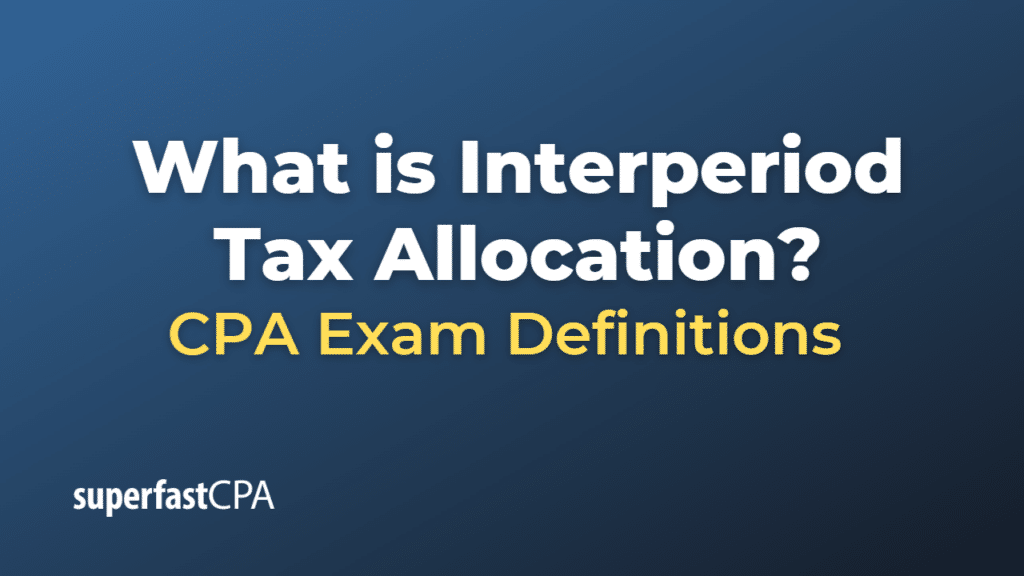Interperiod Tax Allocation
Interperiod tax allocation is an accounting method where income taxes are recognized as an expense in the same period as the revenue and expenses to which they relate. The goal is to improve the matching of expenses with revenues, which is one of the basic principles of accrual accounting.
The rationale for interperiod tax allocation is that it allows for a better comparison of financial results between different periods. Without this method, a company’s income tax expense might be much higher or lower in a given period than in other periods, not because the company’s operations were fundamentally more or less profitable, but because of timing differences in the recognition of certain revenues and expenses for tax purposes compared to accounting purposes.
There are two types of temporary differences that can arise between the financial income (income as per financial accounting) and taxable income (income as per tax laws):
- Taxable temporary differences which lead to amounts of income that are taxable in future periods, where the carrying amount of the asset or liabilityWhat is a Liability? is greater than its tax base.
- Deductible temporary differences which lead to amounts that are deductible in future periods, where the carrying amount of the asset or liability is less than its tax base.
In both cases, interperiod tax allocation requires the company to record a deferred tax liability or deferred tax asset to account for the difference between financial income and taxable income. This difference will reverse in future periods when the timing difference resolves.
The method for calculating and recording these deferred tax assets and liabilities are outlined in accounting standards such as IAS 12 Income Taxes under International Financial Reporting Standards (IFRS) and ASC 740 Income Taxes under U.S. Generally Accepted Accounting Principles (GAAP).
Example of Interperiod Tax Allocation
Let’s consider a simple example of interperiod tax allocation using depreciation:
Assume that a company purchases a machine for $100,000. For financial reporting purposes, the company uses the straight-line method of depreciation and expects the machine to have a useful life of 10 years with no salvage value. This means the company will recognize a depreciation expense of $10,000 each year ($100,000/10 years) on its income statement.
However, for tax purposes, the company uses an accelerated depreciation method allowed by the tax law (such as MACRS in the U.S.), which allows it to deduct $20,000 in the first year, $18,000 in the second year, and less in each subsequent year.
In the first year, the company’s accounting (book) depreciation is $10,000, but its tax depreciation is $20,000. The difference of $10,000 creates a temporary difference, which results in a deferred tax liability.
If the company’s tax rate is 25%, it would record a deferred tax liability of $2,500 ($10,000 * 25%) on its balance sheet in the first year. This is because the company saved $2,500 in taxes in the current year due to the accelerated tax depreciation, but it will pay this amount in the future when its tax depreciation is less than its book depreciation.
Over the 10 years, the total depreciation for financial reporting and tax purposes will be the same ($100,000), but the timing of when that expense is recognized is different. The deferred tax liability balances out these differences to match tax expense with accounting income.














